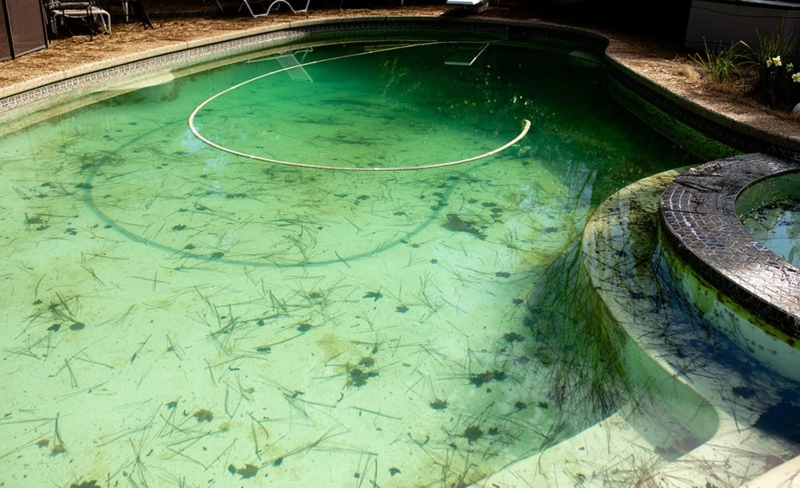Algae are a common occurrence in swimming pools, especially during the summer months when temperatures are high. They can be a nuisance and a health hazard if not controlled properly. In addition to their harmful effects on swimmers, algae can also cause stains on the surface of the pool. This article will explore the causes and prevention of algae stains in concrete pools, as well as how to treat them.
Types of Algae
There are different types of algae that can grow in pools, including green, yellow, black, and pink algae. Green algae are the most common and are characterized by their bright green color. Yellow algae, on the other hand, are often mistaken for dirt or sand and can be difficult to get rid of. Black algae are the most difficult to remove and can grow in deep crevices or cracks. Pink algae, though less common, can also cause staining on pool surfaces.
Causes of Algae Stains in Concrete Pools
Algae stains are caused by the growth and accumulation of algae on the surface of the pool. Algae require sunlight, nutrients, and warm water to thrive, which is why they are more common in outdoor pools during the summer months. In addition to poor pool maintenance, chemical imbalances and inadequate filtration systems can also contribute to the growth of algae.
When algae are left to grow unchecked, they can lead to stains on the surface of the pool. The stains can be difficult to remove, especially if they are left untreated for an extended period. Algae stains can also be exacerbated by the presence of metals in the water, such as iron or copper.
Prevention of Algae Stains in Concrete Pools
Preventing algae stains in concrete pools requires regular pool maintenance and proper chemical treatment. Here are some measures to prevent algae growth and staining:
Regular cleaning: Regular brushing, skimming, and vacuuming of the pool will help to remove debris and prevent the growth of algae.
Chemical treatment: Proper chemical treatment and water balancing are essential in preventing algae growth. Maintaining the correct pH and chlorine levels will help to keep the water clean and prevent the growth of algae.
Use of pool covers and shade structures: Pool covers and shade structures can help to reduce sunlight exposure and prevent the growth of algae.
Treatment of Algae Stains in Concrete Pools
If algae stains have already formed on the surface of your pool, there are different methods to remove them. The treatment method will depend on the severity of the stain and the type of algae present. Here are some methods to remove algae stains:
Pool cleaners and scrubbing: Manual scrubbing of the pool surface, coupled with the use of a pool cleaner, can help to remove algae stains.
Pressure washing: High-pressure water can be used to remove algae stains, but caution should be taken not to damage the pool surface.
Chemical treatment and acid washing: Chemical treatment and acid washing can also be used to remove stubborn algae stains. However, this should only be done by a professional, as it can be dangerous if not done correctly.
Conclusion
Algae stains in concrete pools are a common problem that can be prevented through proper pool maintenance and chemical treatment. Regular cleaning, proper chemical treatment, and the use of pool covers and shade structures can help to prevent the growth of algae and the formation of stains. If algae stains have already formed, there are different methods to remove them, but caution should be taken to avoid damaging the pool surface. By maintaining a clean and well-balanced pool, you can ensure that your swimming experience is enjoyable and stain-free.


